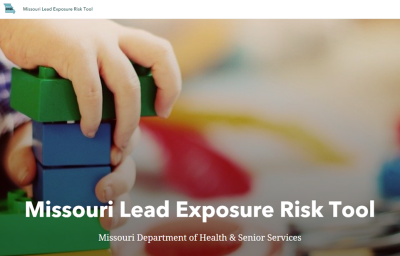Lead Poisoning Prevention
Anyone can be harmed by exposure to lead in the environment. Lead is most harmful to children under six years of age, because their bodies are still developing. Even at low levels, lead exposures can affect a child’s growth, behavior, and development, including their ability to pay attention, learn, and achieve in school. Lead poisoning can have many adverse health effects. Monitoring blood lead levels allows parents, healthcare providers, public health officials, and communities to take action to reduce lead exposures.
Get the Facts
- Lead poisoning can affect anyone.
- Lead poisoning can occur with no obvious symptoms.
- Missouri requires all blood lead test results be reported.
- In 2019, blood lead levels were tested in 78,770 children under age 6 in Missouri.
- In 2019, elevated blood lead levels were confirmed in 1,426 Missouri children.
Blood Lead Level Data Queries
Annual blood lead level data are available from Missouri’s MOPHIMS-EPHT blood lead query. These data provide information on the number of individuals tested each year and the outcomes of those tests. The query system allows users to select data by age group, geography, and other variables. Blood lead data are also available from the CDC Tracking Network Data Explorer.
Blood Lead Cohort and Age of Housing Data
Blood lead cohort data provide information on blood lead testing among children born in the same year, known as a birth cohort. This information includes the number of children tested and the number of those children with elevated blood lead levels.
Housing data provide information on the prevalence of the most common source of lead exposure in children in the U.S.: lead-based paint (and lead-contaminated dust) in homes built before 1980. Lead-based paint was most widely used in housing built before 1950. Soil from weathering of exterior lead-based paint and lead-lined or lead-soldered plumbing are also potential sources of lead exposure in older homes.
These data and additional measures are available from the CDC Tracking Network Data Explorer and the data files below.
Missouri Tracking’s Lead Exposure Risk Tool
 The Missouri Environmental Public Health Tracking program’s Lead Exposure Risk Tool provides information on childhood lead exposure risks at the county and zip code levels. Contributing risk factors include testing rates and elevated blood lead rates, rates of pre-1980s housing, and proximity to lead mining sites. Missouri has a long history of lead mining, and mining waste that has migrated offsite or used as fill material in yards, driveways, and children's play areas is a potential source of lead exposure.
The Missouri Environmental Public Health Tracking program’s Lead Exposure Risk Tool provides information on childhood lead exposure risks at the county and zip code levels. Contributing risk factors include testing rates and elevated blood lead rates, rates of pre-1980s housing, and proximity to lead mining sites. Missouri has a long history of lead mining, and mining waste that has migrated offsite or used as fill material in yards, driveways, and children's play areas is a potential source of lead exposure.
Using the Data
Blood lead and related data are used to:
- identify children at risk of blood lead poisoning
- identify and monitor changes in risk and trends over time
- direct testing efforts, outreach, and educational resources
- identify and remediate sources of lead exposure
- monitor progress towards lowering blood lead levels
Please share with the Missouri Tracking program how you are using or plan to use the data.
Reports and Data Files
- Percent of children born in the same year and tested before age 3
- Percent of children born in the same year with elevated blood lead levels before age 3
Learn more here about the data, including sources, calculations, suggested uses, and limitations.
Additional Resources
- Missouri’s Childhood Lead Poisoning Prevention Program
- Adult Blood Lead Epidemiology and Surveillance
- CDC Environmental Public Health Tracking – Childhood Lead Poisoning
The National Environmental Public Health Tracking Program
Missouri Environmental Public Health Tracking (EPHT) is a program within the Missouri Department of Health and Senior Services and is funded by the Centers for Disease Control and Prevention. EPHT is part of a larger initiative to establish Environmental Public Health Tracking systems at the national and state levels.



 Environmental Public Health Tracking Program
Environmental Public Health Tracking Program